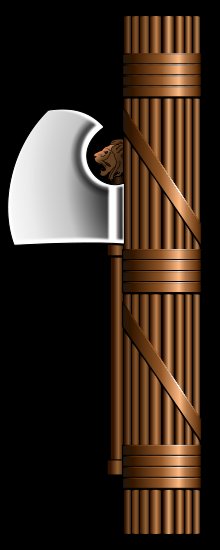By: Garry Hamilton

In Bob McCarty’s article about the salon owner, he offers this quote by Teresa Pershall from among his observations:
Comparing government officials to “sticks” who are willing to cover up for each other and accept mediocrity as long as it allows them to enrich themselves, she went on to highlight corruption as one of the biggest problems she saw in Vietnam.
“One stick, you can break it,” she said. “One chopstick, you can break it. But one-hundred chopsticks, you cannot break.”
What jumped out at me from this description is the inescapable similarity between her “one hundred chopsticks” and this “bundle of sticks” from history:

…also represented thus:

Yes, this is the Roman fasces, literally, a bundle of sticks.
It is from this word that the term “fascism” is derived.
Now, originally, the fasces represented strength, unity, and justice but, like so many symbols throughout history, it was “hijacked” by those hungry for power and willing to oppress in the name of the virtues it represents.
The fasces is even used in the architecture of our nation’s capitol to symbolize those original virtues, but for those who were around when Mussolini adopted it for the Fascist flag, it can be hard to look upon it without mixed emotions.
Yes, the “bundle of sticks” metaphor applies well to the totalitarian model.
Of course we all “know” that fascism and communism are totally different. Totally. Because in fascism, it’s all about the benefit of the STATE, whereas in communism it’s all about the PEOPLE, and the interests of the people are represented and managed by . . . the STATE. Which makes them totally different, because even though in both models all power is reposed in the state, communism is all about the people. Right…
And, in both models, you can’t fight city hall (or the state), because there are just too many sticks in that bundle.
Yes, indeed, I think Teresa’s observation is very apt.
















Excellent post! The analogy fits so well.